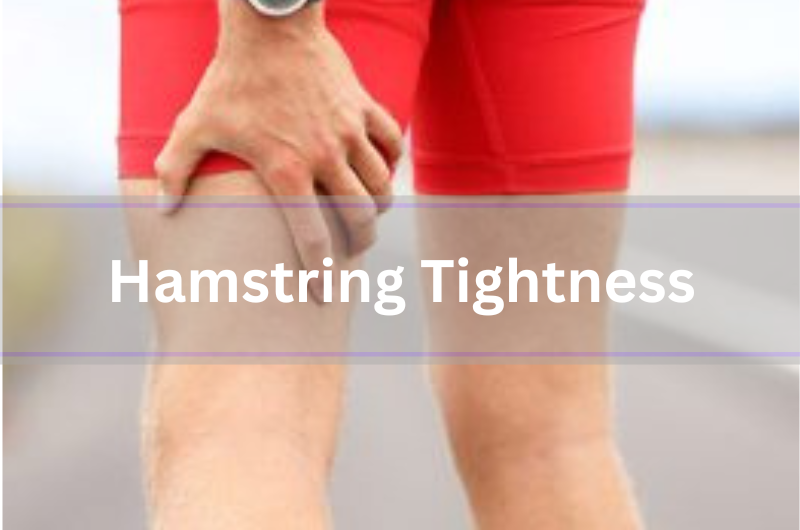Many people suffer with tight hamstrings, limiting their comfort and movement and often affecting mobility of the back. The hamstrings cross two joints are involved in bending the knee (flexion) and extending the thigh at the hip joint. In other words taking the leg behind you and bending the foot up towards your bottom. They are also involved in adduction of the thigh (bringing it towards the midline) as well as internal and external rotation of the knee.
Anatomy: The hamstrings include 3 muscle groups located at the back of each thigh, attaching at one end to the ischial tuberosity (also known as the sitting bones) and a the other end behind the knee. The most medial (on the inner side of the knee) muscle is the semimembranosus, then the semitendinosus and the biceps femoris is the most lateral (to the outer side of the knee). The biceps femoris has two parts; a long and a short head. The semimembranosus and semitendinosus (together with sartorius muscle) insert into the medial surface of the tibia (the larger lower leg bone) and the medial condyle (knobbly bit at the top!); the biceps femoris inserts into the fibula head (the little bone at the side of the lower leg and the lateral condyle of the tibia.
The muscles are innervated by the tibial branch of the sciatic (ischial) nerve, except the short head of the biceps femoris which is innervated by the common peroneal nerve. The hamstrings are part of the reflex system (as when someone taps under your knee and the lower leg jumps forwards for the patellar reflex) which will be instantly activated if, for example you stand on something hot, the hamstrings will activate to lift the foot up and back out of danger.
Symptoms: As the hamstrings are involved in daily activities such as walking bending, running and jumping they can impact our quality of movement and life when they are not in good shape or are injured. When hamstring muscles are tight it can limit our ability to bend forwards and touch our toes; this can also have an impact on our lumbar spine (low back) as the hamstrings can pull down on the pelvis via their attachments to the sitting bones and in turn affect the lumbar; the tension can also be felt at the attachments behind the knee. As they are innervated by a branch of the sciatic nerve they can be involved in sciatica. Hamstrings are particularly prone to injuries, which are common from the impact of sports.
Causes: A sedentary lifestyle will tend to cause tightening of the hamstrings, such as desk working, long hours of driving and long hour of sitting in front of TV, computer, etc. We all have different body types and some can tend towards more stiffness while others can be more flexible naturally, and some people can be hypermobile, which has its own set of problems. A lot of activity and over stretching can also cause a reflex tightening of the hamstrings and they tend to be one of the first muscles to tighten up. Injuries to hamstrings, such as partial tears in the muscle will leave scar tissue as it heals, causing ongoing stiffness, which needs to be addressed and treated appropriately and at the right time of healing. Lower back problems, particularly affecting the nerve root the supplies the hamstrings can also be a cause of tightness; the cause needs to be understood and treated accordingly.
Diagnosis: Please see your doctor or physical therapist if you have an ongoing or serious issue with your hamstrings or back.
Self Help: Stretching the hamstrings appropriately, without force and within your limits is beneficial, if not essential to good movement and back health. Please watch my video on hamstring stretches. There is something for everyone, with exercises standing, sitting and laying down and options for all levels of flexibility. Please only do what feels good and stay within your limits; remember that the key to stretching is listening to your body, backing off when you feel tension, approaching the tension gently and using the breathe to encourage the body to let go and release tension; stay in your comfort zone https://www.youtube.com/watch?v=lWIufKq8vjM&t=22s
Treatment: Imaging may be required or even surgery, where there is tearing.
Osteopathic/Manual Management: Determine the cause with detailed case history and examination. Adjusting spinal and hip bones, soft tissue and myofascial techniques, stretching, dry needling, home rehabilitation exercises; attention to postural habits and ergonomics.
We are happy to advise you on your health matters.
Lin Bridgeford DO KFRP MICAK MICRA FSCCO MSc
Registered Osteopath & Kinesiologist & Senior Yoga Teacher
Master Hypnosis and NLP Practitioner
Aether Bios Clinic
Saltdean
01273 309557 07710 227038
www.osteo-info.co.uk YouTube search Aether Bios OR Lin Bridgeford Instagram linbridgeford
https://linbridgeford.wordpress.com contains all my articles as blogs
Many people suffer with tight hamstrings, limiting their comfort and movement and often affecting mobility of the back. The hamstrings cross two joints are involved in bending the knee (flexion) and extending the thigh at the hip joint. In other words taking the leg behind you and bending the foot up towards your bottom. They are also involved in adduction of the thigh (bringing it towards the midline) as well as internal and external rotation of the knee.
Anatomy: The hamstrings include 3 muscle groups located at the back of each thigh, attaching at one end to the ischial tuberosity (also known as the sitting bones) and a the other end behind the knee. The most medial (on the inner side of the knee) muscle is the semimembranosus, then the semitendinosus and the biceps femoris is the most lateral (to the outer side of the knee). The biceps femoris has two parts; a long and a short head. The semimembranosus and semitendinosus (together with sartorius muscle) insert into the medial surface of the tibia (the larger lower leg bone) and the medial condyle (knobbly bit at the top!); the biceps femoris inserts into the fibula head (the little bone at the side of the lower leg and the lateral condyle of the tibia.
The muscles are innervated by the tibial branch of the sciatic (ischial) nerve, except the short head of the biceps femoris which is innervated by the common peroneal nerve. The hamstrings are part of the reflex system (as when someone taps under your knee and the lower leg jumps forwards for the patellar reflex) which will be instantly activated if, for example you stand on something hot, the hamstrings will activate to lift the foot up and back out of danger.
Symptoms: As the hamstrings are involved in daily activities such as walking bending, running and jumping they can impact our quality of movement and life when they are not in good shape or are injured. When hamstring muscles are tight it can limit our ability to bend forwards and touch our toes; this can also have an impact on our lumbar spine (low back) as the hamstrings can pull down on the pelvis via their attachments to the sitting bones and in turn affect the lumbar; the tension can also be felt at the attachments behind the knee. As they are innervated by a branch of the sciatic nerve they can be involved in sciatica. Hamstrings are particularly prone to injuries, which are common from the impact of sports.
Causes: A sedentary lifestyle will tend to cause tightening of the hamstrings, such as desk working, long hours of driving and long hour of sitting in front of TV, computer, etc. We all have different body types and some can tend towards more stiffness while others can be more flexible naturally, and some people can be hypermobile, which has its own set of problems. A lot of activity and over stretching can also cause a reflex tightening of the hamstrings and they tend to be one of the first muscles to tighten up. Injuries to hamstrings, such as partial tears in the muscle will leave scar tissue as it heals, causing ongoing stiffness, which needs to be addressed and treated appropriately and at the right time of healing. Lower back problems, particularly affecting the nerve root the supplies the hamstrings can also be a cause of tightness; the cause needs to be understood and treated accordingly.
Diagnosis: Please see your doctor or physical therapist if you have an ongoing or serious issue with your hamstrings or back.
Self Help: Stretching the hamstrings appropriately, without force and within your limits is beneficial, if not essential to good movement and back health. Please watch my video on hamstring stretches. There is something for everyone, with exercises standing, sitting and laying down and options for all levels of flexibility. Please only do what feels good and stay within your limits; remember that the key to stretching is listening to your body, backing off when you feel tension, approaching the tension gently and using the breathe to encourage the body to let go and release tension; stay in your comfort zone https://www.youtube.com/watch?v=lWIufKq8vjM&t=22s
Treatment: Imaging may be required or even surgery, where there is tearing.
Osteopathic/Manual Management: Determine the cause with detailed case history and examination. Adjusting spinal and hip bones, soft tissue and myofascial techniques, stretching, dry needling, home rehabilitation exercises; attention to postural habits and ergonomics.
We are happy to advise you on your health matters.
Lin Bridgeford DO KFRP MICAK MICRA FSCCO MSc
Registered Osteopath & Kinesiologist & Senior Yoga Teacher
Master Hypnosis and NLP Practitioner
Aether Bios Clinic
Saltdean
01273 309557 07710 227038
www.osteo-info.co.uk YouTube search Aether Bios OR Lin Bridgeford Instagram linbridgeford
https://linbridgeford.wordpress.com contains all my articles as blogs

